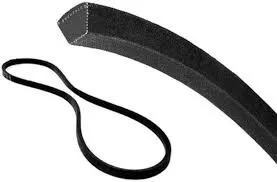- Arabic
- French
- Russian
- Spanish
- Portuguese
- Turkish
- Armenian
- English
- Albanian
- Amharic
- Azerbaijani
- Basque
- Belarusian
- Bengali
- Bosnian
- Bulgarian
- Catalan
- Cebuano
- Corsican
- Croatian
- Czech
- Danish
- Dutch
- Afrikaans
- Esperanto
- Estonian
- Finnish
- Frisian
- Galician
- Georgian
- German
- Greek
- Gujarati
- Haitian Creole
- hausa
- hawaiian
- Hebrew
- Hindi
- Miao
- Hungarian
- Icelandic
- igbo
- Indonesian
- irish
- Italian
- Japanese
- Javanese
- Kannada
- kazakh
- Khmer
- Rwandese
- Korean
- Kurdish
- Kyrgyz
- Lao
- Latin
- Latvian
- Lithuanian
- Luxembourgish
- Macedonian
- Malgashi
- Malay
- Malayalam
- Maltese
- Maori
- Marathi
- Mongolian
- Myanmar
- Nepali
- Norwegian
- Norwegian
- Occitan
- Pashto
- Persian
- Polish
- Punjabi
- Romanian
- Samoan
- Scottish Gaelic
- Serbian
- Sesotho
- Shona
- Sindhi
- Sinhala
- Slovak
- Slovenian
- Somali
- Sundanese
- Swahili
- Swedish
- Tagalog
- Tajik
- Tamil
- Tatar
- Telugu
- Thai
- Turkmen
- Ukrainian
- Urdu
- Uighur
- Uzbek
- Vietnamese
- Welsh
- Bantu
- Yiddish
- Yoruba
- Zulu
окт. . 04, 2024 09:30 Back to list
belt conveyor
Belt Conveyors The Backbone of Modern Material Handling
Belt conveyors are an essential component in the field of material handling and transportation. Their innovative design and efficient operation have made them a crucial asset in various industries, including manufacturing, mining, agriculture, and logistics.
At their core, belt conveyors consist of a continuous loop of material—typically a rubber or plastic belt—supported by a series of pulleys and rollers. The belt moves when a drive pulley pulls it, allowing materials or products to be transported from one location to another with minimal effort. This fundamental design has revolutionized the way goods are moved, providing a reliable and efficient method of transportation.
One of the key advantages of belt conveyors is their ability to handle a wide range of materials. From heavy bulk items like coal and grain to delicate products in packaging industries, belt conveyors can be customized to suit the specific needs of any application. This versatility is particularly beneficial in industries such as mining, where different materials must be transported over varying distances and terrains.
Another significant advantage of belt conveyors is their efficiency. Unlike other material handling systems, such as trucks or manual labor, belt conveyors operate continuously, which reduces transit times and increases overall productivity. Additionally, the use of electric motors to power belt systems means that they are energy-efficient, helping to lower operational costs in the long run.
belt conveyor

Maintenance of belt conveyors is relatively straightforward. Regular inspections and simple adjustments can keep the system functioning optimally. Modern belt conveyor systems often come equipped with automated monitoring and diagnostic tools to identify any potential issues before they become major problems, thus reducing downtime and enhancing reliability.
Safety is also a primary concern in the design of belt conveyors. Features such as emergency stop buttons, guards, and other safety devices are often integrated into conveyor systems to protect operators and minimize accidents. Proper training for staff operating these systems further enhances safety.
Moreover, the design of modern belt conveyors allows for integration with advanced technology. Automation, such as sensors and computer-controlled systems, can optimize material flow and inventory management. This integration streamlines processes and leads to improved data collection, assisting companies in making informed decisions.
In conclusion, belt conveyors are an indispensable part of modern material handling. Their efficiency, versatility, and ease of maintenance have made them a popular choice across various industries. As technology continues to advance, the role of belt conveyors will likely expand, further underpinning their importance in the global economy. Whether it’s moving heavy machinery in a factory or sorting packages in a distribution center, belt conveyors will remain at the forefront of material transport solutions.
-
Korean Auto Parts Timing Belt 24312-37500 For Hyundai/Kia
NewsMar.07,2025
-
7PK2300 90916-T2024 RIBBED BELT POLY V BELT PK BELT
NewsMar.07,2025
-
Chinese Auto Belt Factory 310-2M-22 For BMW/Mercedes-Benz
NewsMar.07,2025
-
Chinese Auto Belt Factory 310-2M-22 For BMW/Mercedes-Benz
NewsMar.07,2025
-
90916-02660 PK Belt 6PK1680 For Toyota
NewsMar.07,2025
-
drive belt serpentine belt
NewsMar.07,2025

